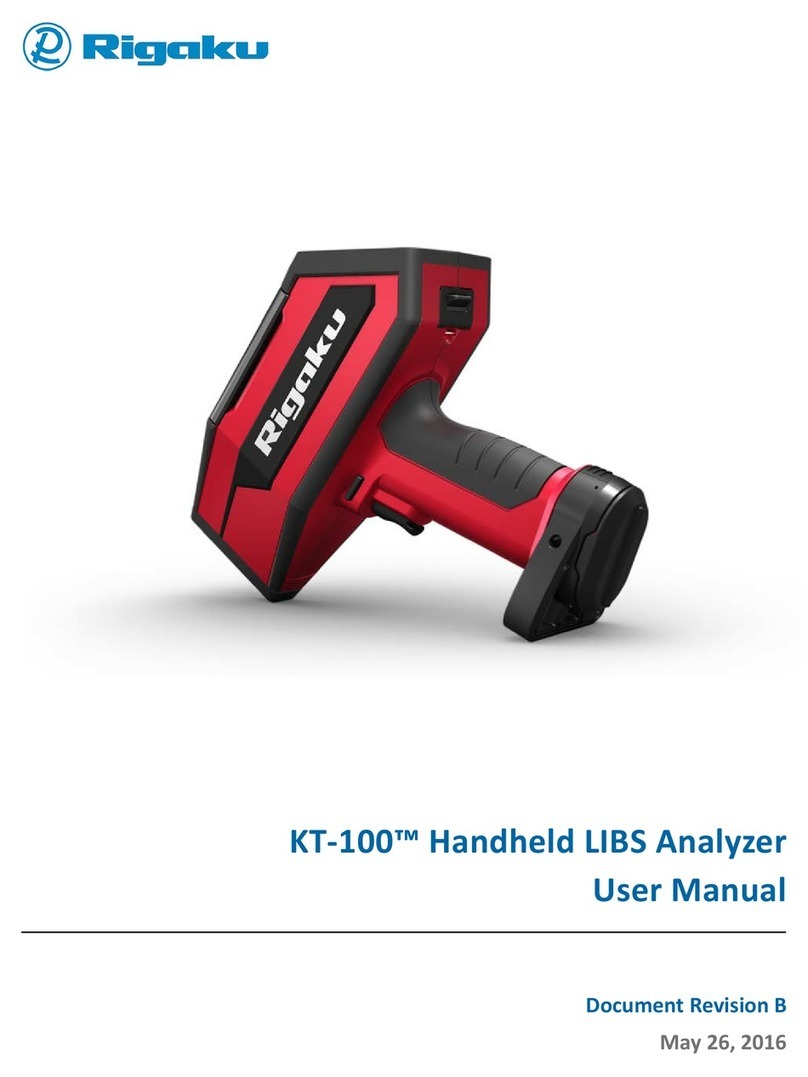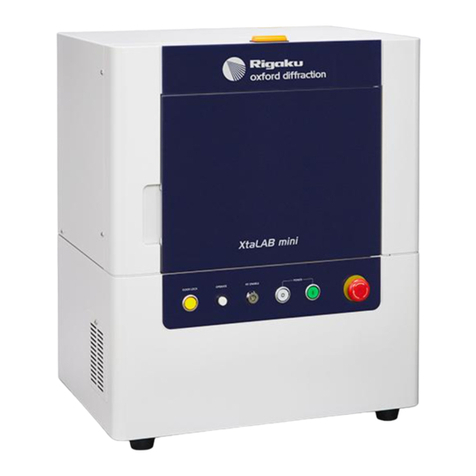
ii MiniFlex 600: Benchtop X-ray Diffractometer
Installing the DS and IHS (Length limiting)............................................................... 27
Connecting the power cable..................................................................................... 27
Connecting with Computer...................................................................................... 27
Installing the Software ............................................................................................ 28
Setting and Adjustment...................................................................................... 29
Types of Soller Slit, Confirming the Soller Slit........................................................... 29
Types of incident Soller slit............................................................................... 29
Confirming the incident Soller slit ..................................................................... 29
Types of receiving Soller slit............................................................................. 30
Optics Alignment (Required for Periodic Inspection or Installing X-Ray Tube).............. 31
Optics alignment (for SC)................................................................................. 31
Optics alignment (D/teX Ultra) ......................................................................... 42
Optics alignment (for D/teX only) ..................................................................... 50
HV/PHA Adjustment of Scintillation Counter (SC)..................................................... 64
Discriminator Value Setting by D/teX Ultra............................................................... 67
Automatic adjustment of discriminator value ...................................................... 67
Directly entering the D/teX Ultra adjustment value.............................................. 69
Initial Setting of the Measurement Environment (Required When the X-Ray Tube Type Has
Been Changed)....................................................................................................... 71
Data Measurement and Setting Procedure for Real-Time 2 theta Axis Correction (Required
for Initial Setup or Periodic Inspection)..................................................................... 72
Startup and Shutdown (Daily routine)................................................................77
Starting Up the System............................................................................................ 77
Shutting Down the System ...................................................................................... 78
Measurement of Samples (Daily routine) ............................................................79
Preparing the Sample Plate ...................................................................................... 79
Preparation of powder sample on aluminum sample plate ..................................... 79
Preparation of block sample on aluminum sample plate........................................ 81
Preparation of powder sample on glass sample plate ............................................ 81
Cleaning spilled or deposited powder sample ...................................................... 82
Slit system............................................................................................................. 83
Slit Correction........................................................................................................ 83
Measurement with MiniFlex Guidance...................................................................... 85
Maintenance ......................................................................................................91
X-Ray Tube and Scintillation Counter (SC) ............................................................... 91
Replacing the X-ray Tube (Procedures required when cleaning filter or replacing tube) 91
Removing and installing the X-Ray tube ............................................................ 91
Disassembling the X-ray tube and cleaning the filter............................................ 93
Cleaning and Further Information............................................................................. 94
Confirming the Alarm Information ........................................................................... 95

































